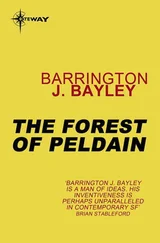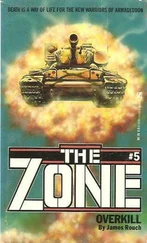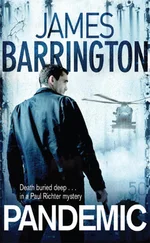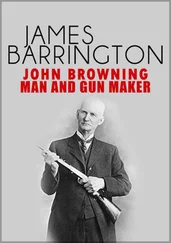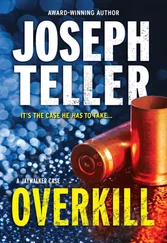Lacomte nodded agreement. ‘Back in 1958,’ Richter said, ‘a man named Sam Cohen, who was employed as a strategic nuclear weapons analyst by the Rand Corporation in California, started looking into the secondary effects caused by the detonation of large thermonuclear weapons. One thing that struck him was the very high level of neutron emissions that was essentially a by-product of the detonation of a fusion weapon. Normally a hydrogen bomb has an outer casing of uranium which is irradiated by those neutrons and which contributes to the explosive yield of the weapon. Cohen theorized that if a bomb was designed without the uranium casing, the released neutrons would travel considerable distances and could penetrate pretty much anything. As neutron radiation has a high lethality, such a weapon would be an excellent people-killer, but due to the lower explosive yield of the weapon, it would cause much less structural damage on detonation.
‘And there was another benefit. Nuclear fallout is mainly caused by the products of fission reactions, and this weapon was by definition a fusion device triggered, like all fusion weapons, by a very small fission explosion. So, a bomb of this type would release only about one per cent of the radiation of a fission bomb of comparable size, causing minimal fallout, and the neutron radiation disperses very quickly, which would mean that the area could be entered comparatively soon after detonation. This was the birth of the Enhanced Radiation Weapon or neutron bomb.’
‘The ERW, Mr Beatty? This is hardly news, is it?’ Whatever Colonel Lacomte had been expecting, it clearly hadn’t been a lesson on the physics of nuclear weapons.
‘No, Colonel, it isn’t news, but it is essential background. Anyway, the neutron bomb became a political football. The Kennedy administration decided not to build any such weapons because it might affect their relations with the Soviet Union, but when the Russians broke the existing moratorium on nuclear weapons tests they changed their mind. The first American ERW was tested in 1962 and large-scale manufacture began in the 1970s, when President Carter proposed installing neutron warheads on Lance missiles and howitzer artillery shells to be deployed in Europe. That decision caused such political turmoil that Carter eventually backed down, indefinitely deferring any such deployment. Reagan was more of a hawk, and re-authorized the production of ERWs, but with the caveat that they would be stored in America and only deployed to Europe if hostilities broke out. The Russians, who were largely behind the “ban the neutron bomb” campaign, had secretly developed their own ERWs. France had tested its own version of the weapon by 1980 and began series production in 1982.’
‘Your information is out-of-date, Mr Beatty. We ceased production of these weapons in 1986, and that is not a secret.’
‘Agreed, Colonel. But France didn’t destroy her existing stocks, did she? Nor did the Americans, who still hold in excess of seven hundred neutron warheads, all of tactical, not strategic, size. The latest information we have suggests that China, Israel and South Africa, at the very least, all have stockpiles of neutron weapons of various sizes and yields.’
The DST men seemed to be keeping up with Richter, but Tony Herron looked moderately confused. Richter smiled at him. ‘That’s the history, and most of the background. There are just a couple of other things you need to know. First, since glasnost , America has been paying billions of dollars to the Russians in exchange for plutonium from dismantled nuclear weapons. They had the best of motives – if the USA could buy all their plutonium, then the Russians wouldn’t need to sell it on the black market with the risk of it ending up in the hands of terrorists. Unfortunately, all the expert independent evidence shows that the Russians have actually been handing over material produced in their nuclear power plants, and not weapons-grade plutonium. That suggests very strongly that the Russians, contrary to their public statements, have not been dismantling any of their nuclear weapons.
‘Second, it’s well known that to construct a fission bomb you need uranium-235, but to build a fusion weapon or a neutron bomb you have to have access to plutonium. That’s a well-known fact, and it’s completely wrong.’ Richter paused and looked at Colonel Lacomte. ‘Have you ever heard of red mercury?’ he asked.
National Military Command Center, The Pentagon, Washington, D.C.
By five fifteen a.m., local time, the last of the Joint Chiefs of Staff and their aides had assembled in the National Military Command Center – a suite of offices on the third floor of the Pentagon. The noisiest section of the NMCC is the office which handles the raw data, because of the rows of clattering telex machines that bring in reports and information from sources worldwide. It has a bank of clocks set for a variety of world time zones and a permanent display of maps showing the dispersal of strategic assets and troops of all major national armed forces. Quiet by comparison, the Emergency Conference Room is next door.
The ECR is a split-level room. On the lower level, the duty officers, known as the Battle Staff, sit on both sides of the ‘leg’ of a vast T-shaped table, collating data. Four Emergency Action officers sit at purpose-built consoles along the top of the ‘T’, each with communication links to American forces around the world. The Joint Chiefs of Staff, the President’s military advice team, sit on a raised platform slightly above and to the left of the table used by the Battle Staff. On the opposite side of the room, and in front of the Joint Chiefs, are six huge colour screens on which can be displayed maps of any area of the world, as well as plans, charts, surveillance and other photographs, details of troop concentrations and any other type of graphic which would help to clarify a developing situation.
The NMCC, like the White House Situation Room and the hardened facilities at Cheyenne Mountain, the Underground Complex at Offutt, and Raven Rock, forms part of a single vast command structure, linked by telephones, faxes and telex machines, satellites, radios and computers. Although the briefing was being delivered in the Pentagon, staff at the other linked locations would be able to hear every word that was said.
An army general was the Senior Duty Battle Staff Officer, and would normally have conducted the briefing of the Joint Chiefs. The situation, however, was not normal.
‘Gentlemen,’ the general began without preamble, ‘we have an unfolding situation possibly involving disaffected elements within the former Soviet Union. A definite threat, not involving overt troop or conventional military manoeuvres, has been made against both the United States and Western Europe. This briefing will be in two parts. First, Mr Walter Hicks, the Central Intelligence Agency’s Clandestine Services Director of Operations, and currently the acting DCI, will brief you on the history and substance of the threat. When he has concluded and answered any questions you may have, I will advise you of the White House’s response to the situation, and what the President intends to do next.’
The general looked up, glanced to his left and nodded. Walter Hicks stubbed out his cigar in the ashtray by his left arm, got to his feet and walked over to the lectern.
American Embassy, Grosvenor Square, London
The internal telephone on Roger Abrahams’ desk rang at nine fifty. He put down the file he had been studying and picked up the handset. ‘Abrahams.’
‘This is the switchboard, sir, and I have a call holding for you. The caller won’t identify himself, but says it’s urgent and a personal matter,’ the Embassy operator announced.
Читать дальше





